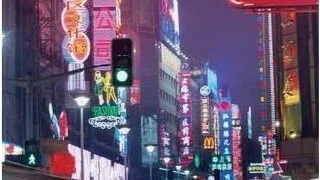The Cambridge Companion to Modern Chinese Culture
Just what is “modern Chinese culture”? As I read this superb collection of essays by experts in different fields, I searched for an appropriate image.
Is it a river, fed by several tributaries? That would imply that contemporary Chinese culture has a “mainstream” formed by different contributing elements. That may be a prevalent, perhaps even “official” view, but it does not reflect the complexity of today’s China.
What about a painting with many hues – ancient Chinese traditions, modern assimilations from Japan and the West? That’s better, but it assumes one “artist” with a comprehensive plan. No such single determining factor, not even the Chinese Communist Party, imposes unity upon the current scene. A mosaic? If the sheer number of chapters in this book is any indication, there are certainly enough “pieces” to make a variegated pattern, but again, that would not convey the crazy complexity of the whole. “Collage” captures the presence of many discrete components with no apparent coherence, but is too static.
I finally settled upon the kaleidoscope as an image to communicate the impression I gained from these essays. Today’s Chinese culture is comprised of a bewildering array of traditions and innovations, complementary components and competing interests, major trends and significant sub-themes, official positions and popular deviations, all of which are in constant interaction, creating multiple shifting patterns that defy coherent description.
We can discern overall trends, as I shall try to show in a moment, but for now let us simply glance at the rich mine of information and analysis contained in The Cambridge Companion to Modern Chinese Culture.
Editor Kam Louie opens with an attempt at “Defining Chinese Culture” by asserting that “‘change’ provides the key to our discussions.” He finds that defining “modern,” “Chinese” and “culture” is no easy task, and even posits the existence of a “post-Chinese Chinese culture.” He notes that “in the twentieth century … this culture has become the site of intense struggle, with everyone claiming ownership of it, and in the process changing its meaning and content. Any proposed “essence,” such as “treasuring family ties, respecting the old, valuing formal education and honoring hard work” are found in most societies and furthermore is “vague and forever changing.”
A list of chapter titles (and/or sub-titles) will provide both an idea of the depth and breadth of this volume and of the sheer number of domains and arenas that must be considered in order to get a picture of modern China:
2. “Social and political developments.”
3. “Historical consciousness and national identity.”
4. Gender.
5. “Ethnicity and Chinese identity.”
6. “Diaspora cultures.”
7. Modernizing Confucianism and ‘new Confucianism.’”
8. Socialism in China.
9. “Chinese religious traditions” (including Christianity).
10. Languages.
11. “The revolutionary tradition in modern Chinese literature.”
12. “The involutionary tradition in modern Chinese literature.”
13. “Music and performing arts: tradition, reform, and political and social relevance.”
14. “Chinese art and the experience of modernity.”
15. “Cinema: from foreign import to global brand.”
16. Television and the Internet.
17. “Physical culture, sports and the Olympics.”*
A few themes seem to dominate this book, and may be arranged according to the ancient yin and yang paradigm, in complementary but competing pairs that constantly interpenetrate each other. These include:
Ancient/modern. In almost all areas of culture, today’s China seeks to find some sort of accommodation between its glorious past and the challenges of modernity.
Traditional/contemporary. Readers of this book should look for ways in which modern China negotiates the interplay between the traditional, towards which Chinese harbor ambivalent feelings, and the contemporary, with its promise and peril.
China/the West. Since the arrival of the Jesuit missionaries in the 16th century, Chinese have had to adjust their self-image in response to intellectual, cultural, religious, military, economic, and technological pressure from the West.
Pride/shame. Chinese people have had to give up their ethnocentric pride and endure more than a “century of humiliation,” with the pendulum swinging now back towards confidence and even cockiness.
Rural/urban. Though urban culture permeates all of society through the media, especially television, the rural and urban divide goes deeper than just the alarming income disparity.
Local/national. The modern state claims pre-eminence in the affections, obedience, and loyalty of its citizens, but local allegiances and traditions refuse to disappear, and in some cases are growing stronger.
Control/freedom. In other words, even as the state has gained unprecedented powers of control, largely through modern organization and technology, that same technology combines with market forces to grant increasing freedom to millions who yearn to be something other than a cog in the revolutionary engine.
Individual/society. Postmodern, globalized individuals, especially the young, express their uniqueness in ways undreamt of in previous Chinese societies, but still identify more with the group than do their Western counterparts.
Male/female. As if all of this were not enough, contemporary culture has put several new twists on the age-old “battle of the sexes,” and has grafted new “femininities and masculinities” onto the intractable differences between the sexes.
Simply put, The Cambridge Companion to Modern Chinese Culture should be required reading for anyone seeking to understand the country that dominated the Olympics and plays a central role in the economy, politics, and soon the culture, of the entire world.

